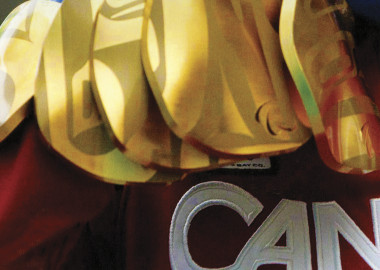Over dinner last week, John told us about ongoing research by Michael Gazzaniga, a cognitive neuroscientist at the University of California, Santa Barbara. Gazzaniga has been studying people whose left and right brains are separated due to surgeries or accidents, and the (missing) functionality of the “split brain.” The left brain is the home of speech and language computation, and the right specializes in visual-spatial processing and facial recognition.
This diagram from Nature magazine shows how the split brain works: [of two minds – graphic]

“The great pleasure and feeling in my right brain is more than my left brain can find the words to tell you.” (http://bit.ly/wC1OKd)
As the Interpreter, the left brain is also is a natural narrator, allegorist and liar. It’s the storytelling half of the brain, which weaves a big tale out of past thoughts and experiences. Sometimes we do irrational things — like having another glass of wine even though our doctor said to cut back on the drinks — and the left brain reconciles that behaviour by making a story: perhaps it’s the health narrative (“Red wine has antioxidants”) or a yarn about the doctor’s lack of education! The left hemisphere’s job is to give our actions, whether they come out of subconscious or conscious decisions, coherence.
Storytelling goes deep, and so does our comfort level for bending the truth. We simply hardwired to do it. And, as Gazzaniga suggests, that’s why we all have an affinity for fiction. Here’s how he explains it in a video on Big Think:
“Could it be, as some people have suggested, could it be that that prepares us for unexpected things that happen in our life because we’ve already thought about them in our fantasy world or read about them in a fictitious setting and saw how those characters acted and so then when we’re confronted with it we’re ready? We’ve sort of lived through that movie, as it were.





